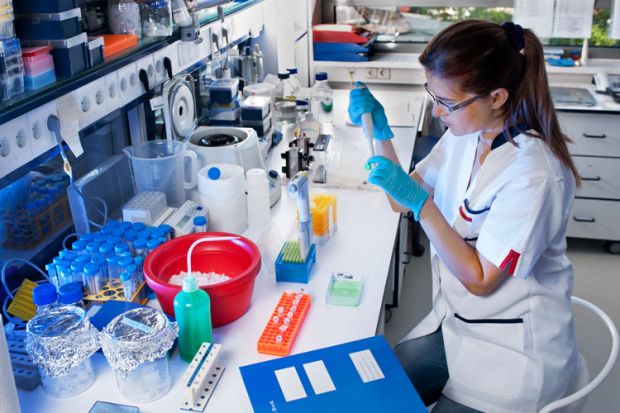The average male physicist and mathematician authors nearly 50 per cent more papers than his female colleagues, an analysis of nearly a million preprints has suggested.
The study of 938,000 preprints on the arXiv open access repository, used mostly by researchers in physics and maths, was carried out by Emma Pierson, a statistician at DNA analysis company 23andMe and soon to be a Rhodes scholar in computational biology at the University of Oxford.
According to Ms Pierson’s account of her research on the FiveThirtyEight website, the proportion of authors who were identifiably female rose from 8.7 per cent in 1991 to 15.5 per cent in 2014. However, over that period the average male published 45 per cent more papers than the average female, and twice as many solo papers.
Ms Pierson suggests that women’s lower publication output and consequent lower number of collaborators could blight their careers since “being friends with a scientist who reviews a paper, grant or job application can provide a crucial bonus”.
One explanation for women’s lower output is that men are more likely to be principal investigators – who are typically authors on all of their labs’ publications. Women accounted for 17 per cent of authors overall, but only 12 per cent of PIs. But Ms Pierson also found that male PIs published significantly more papers than female PIs.
She told Times Higher Education that possible reasons for this were female scientists’ childcare responsibilities and their tendency to spend more time teaching. She also said that gender bias might make it harder for female scientists to get published.
Ms Pierson was surprised to find that women were more likely than men to secure first authorship of papers, indicating that they did most of the work. But she was unconvinced that this was a positive sign since “it might just mean women are underrepresented among middle authors”.
She said that the most “clearly positive sign” from the figures for female scientists was that their numbers were increasing – especially given that women are more likely to be first authors in fields where more women work.
“People just tend to like and relate to those similar to themselves, and I think it’s easier to feel comfortable as a woman scientist if you’re not always the only [one] in the room,” she said.





